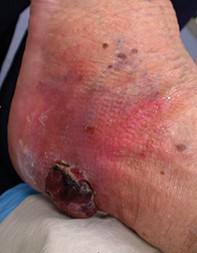Peer Reviewed
Feature Article Geriatrics
Assessing leg ulcers
Abstract
Leg ulcers are a common source of morbidity in our community, typically having a chronic course and a propensity to recur. History and examination provide the most valuable diagnostic information, but the judicious use of simple investigations can help in diagnosis and also guide further management.
Key Points
- Treatment of a leg ulcer depends on the underlying aetiology.
- Most chronic leg ulcers are due to venous and/or arterial disease.
- Malignancy can mimic or coexist with the common causes of leg ulceration.
- If an ulcer fails to heal, review the diagnosis and consider a tissue biopsy.
- In leg ulcer management, failure to heal is the most common reason for specialist referral of patients.
Purchase the PDF version of this article
Already a subscriber? Login here.

